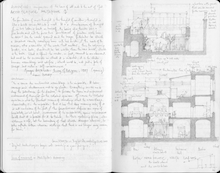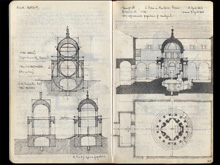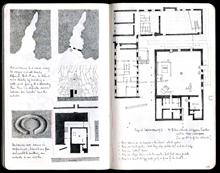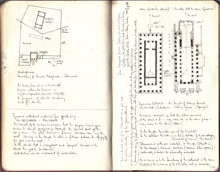 Professor Simon Unwin BArch PhD
Professor Simon Unwin BArch PhD

Simon Unwin is a freelance writer based in Cardiff, UK. He has been a registered architect but concentrates on writing about architectural analysis and design. His publications include six books: Analysing Architecture (Routledge, London, 1997, 2003, 2009, 2014 and 2021); An Architecture Notebook: Wall (Routledge, 2000); Doorway (Routledge, 2007); Twenty-Five+ Buildings Every Architect Should Understand (Routledge, 2010, 2015 and 2023); Exercises in Architecture (Routledge, 2012 and 2022); and The Ten Most Influential Buildings in History: Architecture's Archetypes (Routledge, 2016). These books are used in schools of architecture around the world. Analysing Architecture has been translated into Chinese, Japanese, Korean, Persian, Portuguese, Russian, Spanish and Arabic.
In 2019, Simon Unwin instigated a new series of Analysing Architecture Notebooks (see right) which further explore the workings of architecture, offering ideas to those facing the challenges of doing it. So far, there are four volumes: Children as Place-Makers (2019); Metaphor (2019); Curve (2019); and Shadow (2020). Further volumes are in prospect.
Simon Unwin is Emeritus Professor of Architecture at the University of Dundee, Scotland, where he was Professor from 2004 to 2009. Previously he was Senior Lecturer at the Welsh School of Architecture in Cardiff University, Wales. He has lived in Australia as well as the UK and taught or lectured in Israel, the USA, China, Malaysia, India, Sweden, Turkey and at other schools of architecture in the UK and Europe.
Contact
Join the mailing list
Links
- Simon Unwin's list of the 'best books on traditional architecture and its contribution to contemporary practice'
- Podcast conversation on Exercises in Architecture (October 2022)
- Podcast discussion of Analysing Architecture: the Universal Language of Architecture (February 2021)
- Keeping a Notebook article on Drawing Matter website
- Analysing Architecture website
- An excerpt from the Analysing Architecture Notebook Shadow, on the Drawing Matter website

SeCRETS of ARCHITECTURE
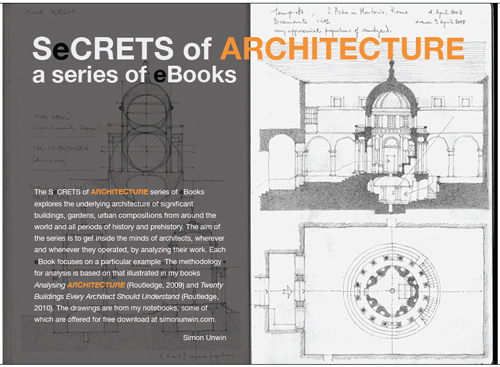
The SeCRETS of ARCHITECTURE series of eBooks explores the underlying architecture of significant buildings, gardens, urban compositions from around the world and all periods of history and prehistory. The aim of the series is to get inside the minds of architects, wherever and whenever they operated, by analyzing their work. Each eBook focuses on a particular example. The methodology for analysis is based on that illustrated in my books Analysing ARCHITECTURE (Routledge, 2009) and Twenty Buildings Every Architect Should Understand (Routledge, 2010).
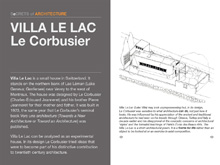
VILLA LE LAC
The second eBook in the SeCRETS of ARCHITECTURE Series analyzes Le Corbusier's Villa Le Lac, on the banks of Lac Léman in Switzerland.
SeCRETS of ARCHITECTURE eBooks are downloadable for your iPad from iBooks.

Analysing Architecture
Many people find it difficult learning to do architecture. Initially it can be like asking your brain to do something for which it has no frame of reference. Generally speaking, pre-university education does not prepare the creative mind for the peculiar challenges of architecture. I have known intelligent people – A-grade students in literary or science subjects, unused to academic difficulty – whose confidence has been knocked when faced with the challenges of architecture. Back in the 1990s, I wrote this book to help and, through subsequent editions, revised and expanded it to make it better. This is the fifth edition, complete with new chapters and a subtitle which is explained in the Introduction.
The theory of architecture the book presents remains the same. Even so, in response to comments gleaned from a survey of users conducted by my publisher, I continue to try to express it more clearly and thoroughly.
There are a few significant changes. The Case Studies at the end of previous editions have been omitted and much of the material contained in them redistributed amongst earlier chapters. Alternative and more thorough case studies can be found in the sister book Twenty-Five Buildings Every Architect Should Understand (2017). The Case Studies have been replaced by a completely rewritten chapter on ‘How Analysis Can Help Design’, moved from its position early in the book and placed at the end, where references can be made back to examples in earlier chapters. The chapter on ‘Temples and Cottages’ has been moved near the end too, for similar reasons.
In addition, four extra chapters have been added under the banner ‘Themes in Spatial Organisation’: on ‘Axis’, ‘Grid’, ‘Datum Place’ and ‘Hidden’. Other themes relating to Analysing Architecture can be found, treated at greater length, in the separate volumes of the Analysing Architecture Notebook series.
Sample pages
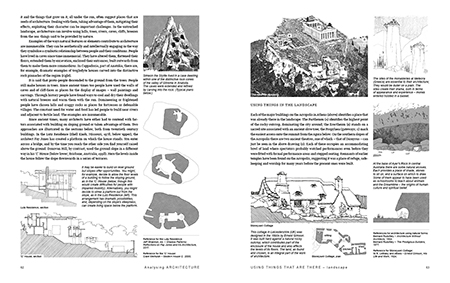
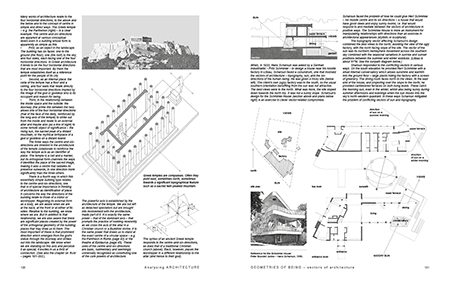
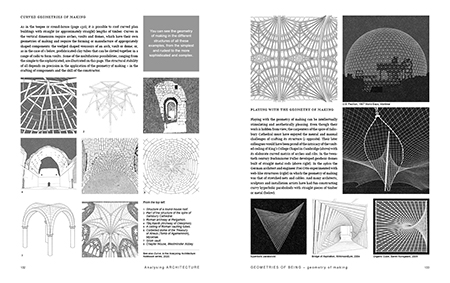
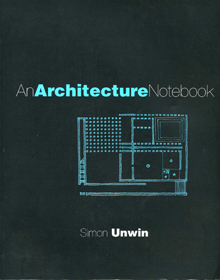
An Architecture Notebook: Wall
An Architecture Notebook builds on the foundation of Simon Unwin's previous book Analysing Architecture (Routledge, 1997). Using numerous examples, illustrated with clear line drawings, this volume describes and illustrates the many powers attaching to one of the most basic architectural elements – the wall.
Exploring its primitive origins in relation to the natural walls of cliffs and caves, illustrating the effects and opportunities of its evolution into the artificial and then the naked cave, and examining the ways in which it is used to frame and organise the spaces of our lives, this book presents the wall as one of the most powerful inventions of the mind.
Like its predecessor, An Architecture Notebook is a stimulus to thinking about what one can do with architecture. It offers an example to student architects of how they might keep their own architecture notebooks, collecting ideas, sorting strategies, generally expanding their understanding of the potential of architecture to change the world.
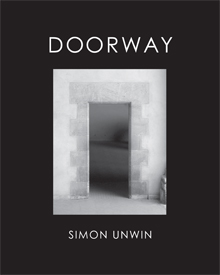
Doorway
Remember that frisson as you step through a doorway: into a crowded party or a silent church; for a job interview, or into your own home after a long journey. Though we take them for granted, doorways impinge on our lives in many ways. Their thresholds divide up the world, punctuating our movements from place to place and creating 'fault-lines' in our experience. Their mystery intrigues and challenges us. We measure ourselves against them and they set down the geometry of our relationships. Doorways affect our emotions and influence how we behave; sitting on a doorstep, we can find peace just watching the world go by. Framing the transient moment, doorways stand as reminders of the 'between' in which we live. It is no wonder that through human history and across all cultures, doorways have possessed great symbolic power and had ceremonies and rituals associated with them.
Doorway is a profound but accessible and entertaining exploration of the ways our built surroundings set out the spatial matrix of our existence. Using examples from archaeology to the present, and from all around the world, this book provides a fresh and revealing perspective on architecture and its poetry.
Sample pages
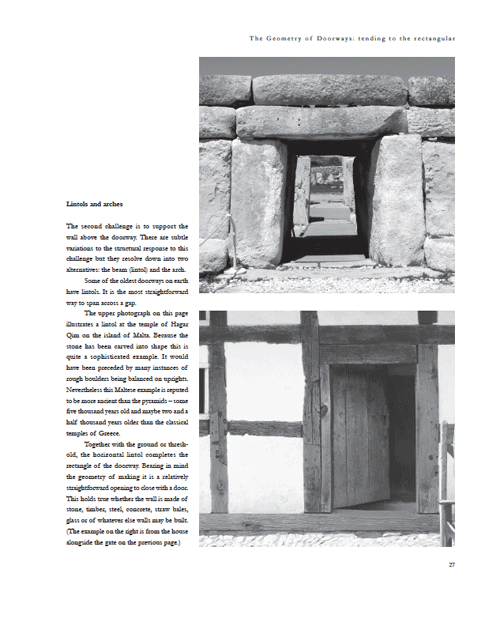
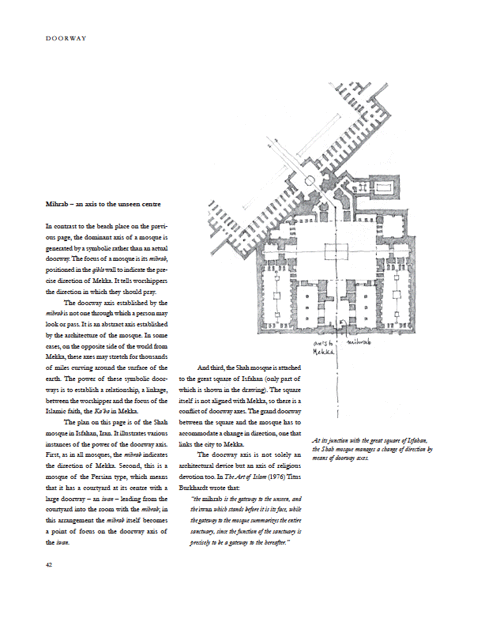
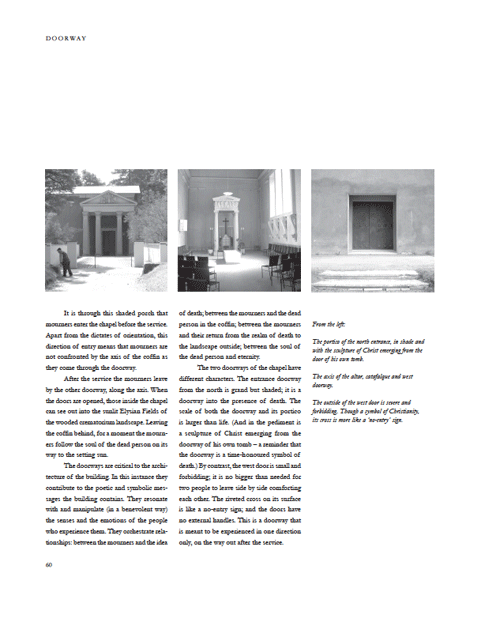
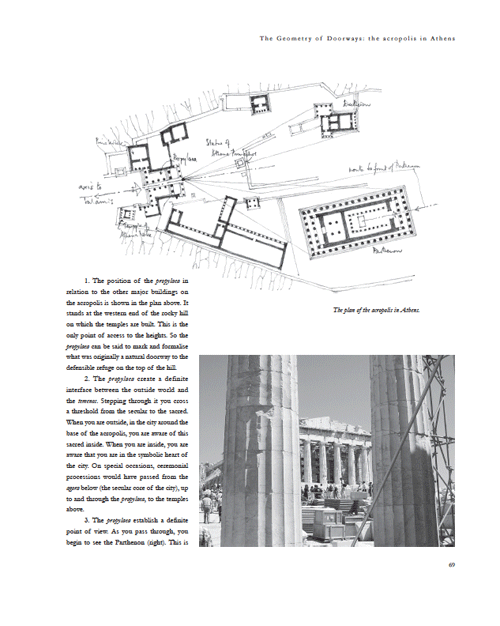
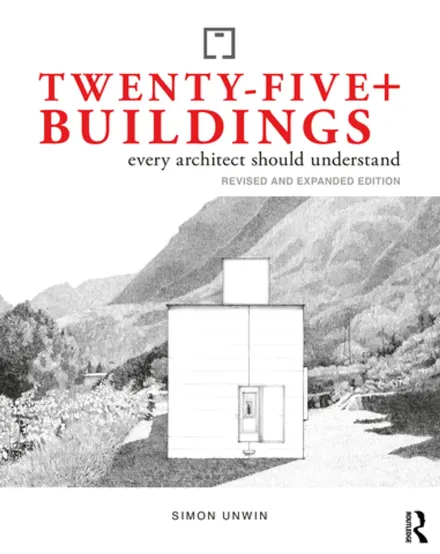
Twenty-Five+ Buildings Every Architect Should Understand
Architects live by ideas. But where do they come from? And how do they shape buildings? There is no one right way to do architecture. This book illustrates many. Its aim is to explore the rich diversity of architectural creativity by analysing a wide range of examples to extract the ideas behind them.
Twenty-Five+ Buildings Every Architect Should Understand is a companion to Simon Unwin’s Analysing Architecture: the Universal Language of Place-Making (most recent edition, 2021), and part of the trilogy which also includes his Exercises in Architecture: Learning to Think as an Architect (second edition, 2022). Together the three books offer an introduction to the workings of architecture providing for the three aspects of learning: theory, examples and practice. Twenty-Five+ Buildings focuses on analysing examples using the methodology offered by Analysing Architecture, which operates primarily through the medium of drawing.
An underlying theme of Twenty-Five+ Buildings Every Architect Should Understand is the relationship of architecture to the human being, how it frames our lives and orchestrates our experiences; how it can help us give form to the world and contributes to our senses of identity and place. Exploring these dimensions through case studies that illustrate the rich diversity of twentieth- and twenty-first-century architecture, this book is essential reading, and hopefully an inspiration, for every architect.
In this new edition, supplementary analysis and discussion has been added to each of the twenty-five case studies, drawing attention to their influences from and on other architects. A number of extra shorter analyses have been included too, following the practice of presenting extra small dishes interspersed among main courses in high-end restaurants. These additional short analyses account for the + sign after ‘Twenty-Five’ in the title of this edition, and double the number of buildings analysed to around fifty.
Sample pages
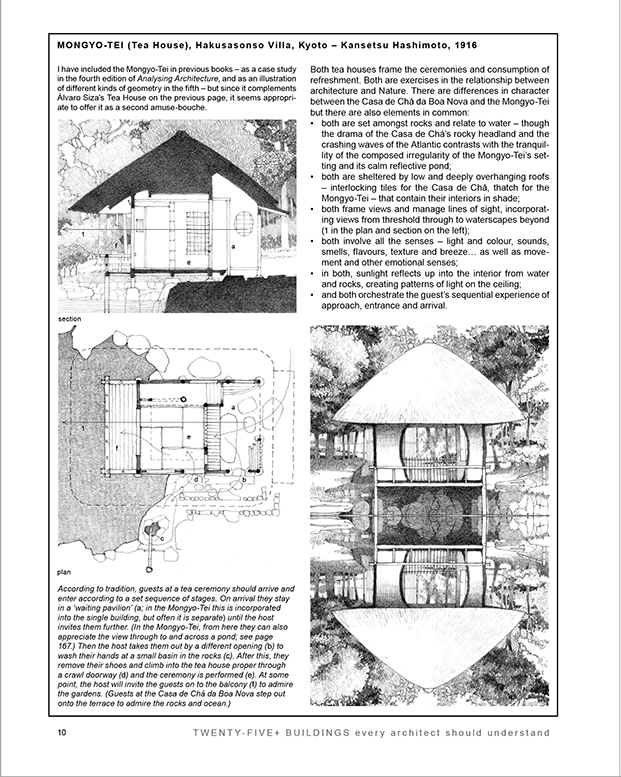
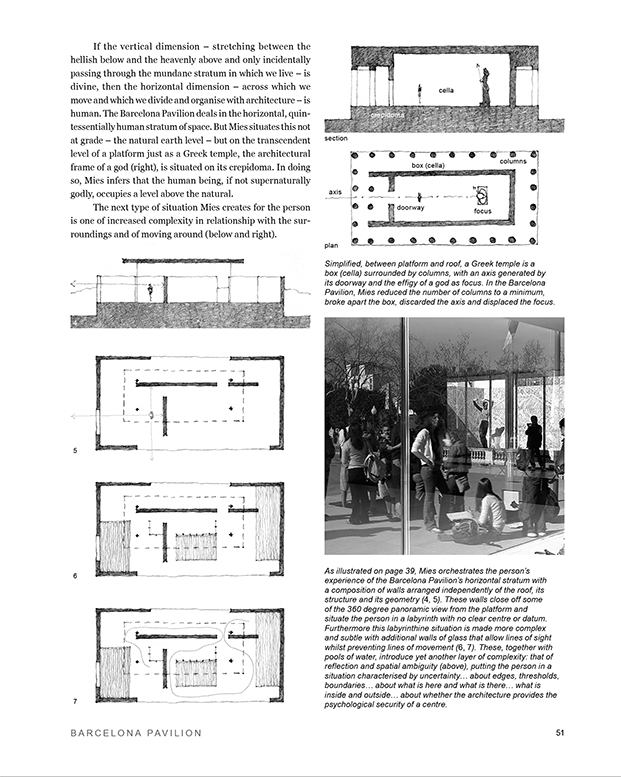
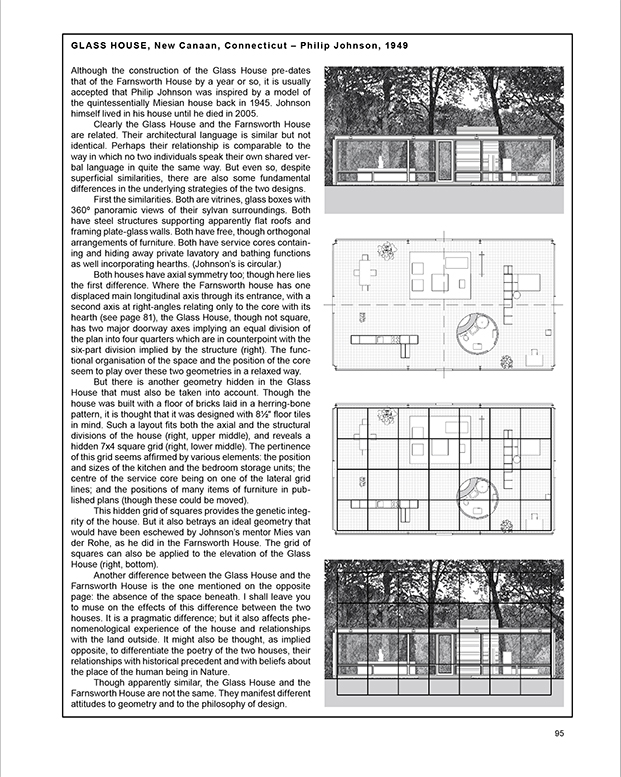
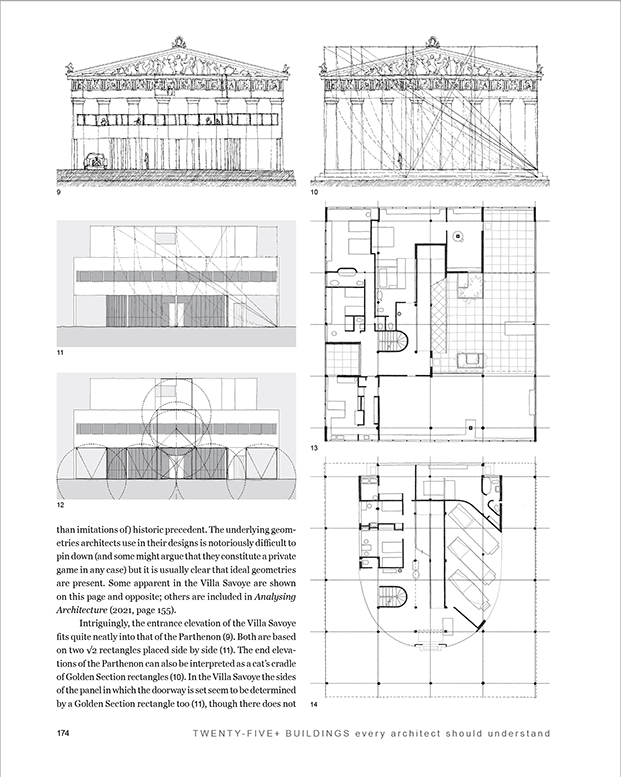
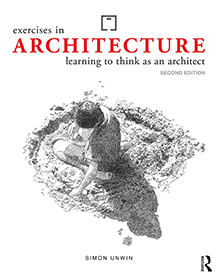
Exercises in Architecture
This revised edition of Exercises in Architecture: Learning to Think as an Architect is full of new content, building on the success of the previous edition. All the original exercises have been revised and new ones added, with the format changing to allow the inclusion of more supplementary material. The aim remains the same, to help pre- or early-course architecture students begin and develop their ability to think as architects.
Learning to do architecture is tricky. It involves awakening abilities that remain dormant in most people. It is like learning language for the first time; a task made more mystifying by the fact that architecture deals not in words but in places: places to stand, to walk, to sit, to hide, to sleep, to cook, to eat, to work, to play, to worship...
This book was written for those who want to be architects. It suggests a basis for early experiences in a school of architecture; but it could also be used in secondary schools and colleges, or as self-directed preparation for students in the months before entering professional education.
Exercises in Architecture builds on and supplements the methodology for architectural analysis presented in the author's previous book Analysing Architecture: the Universal Language of Place-Making (fifth edition, 2021) and demonstrated in his Twenty-Five Buildings Every Architect Should Understand (Routledge, 2015). Together, the three books deal with the three aspects of learning any creative discipline: 1. Analysing Architecture provides a methodology for analysis that develops an understanding of the way architecture works; 2. Twenty-Five Buildings explores and extends that methodology through analysis of examples as case studies; and 3. Exercises in Architecture offers a way of expanding understanding and developing fluency by following a range of rudimentary and more sophisticated exercises.
Those who wish to become professional architects (wherever in the world they might be) must make a conscious effort to learn the universal language of architecture as place-making, to explore its powers and how they might be used. The exercises in this book are designed to help.
Sample pages
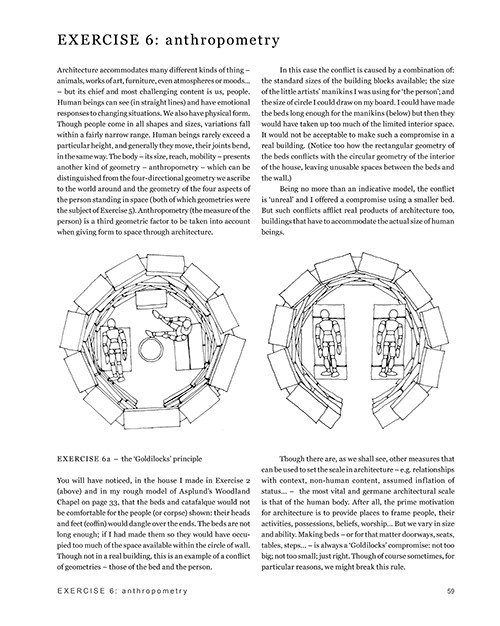
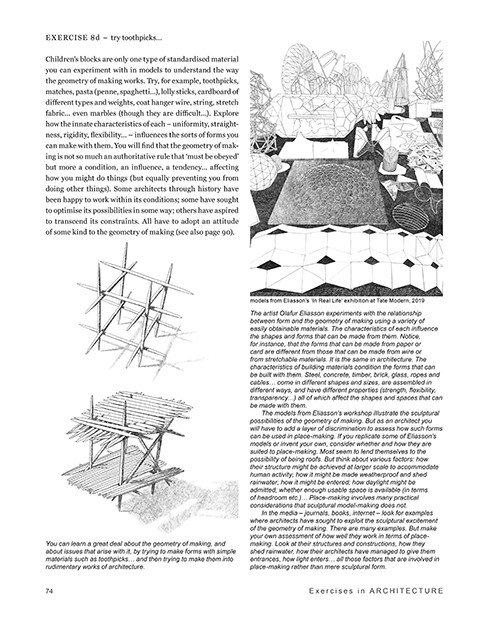
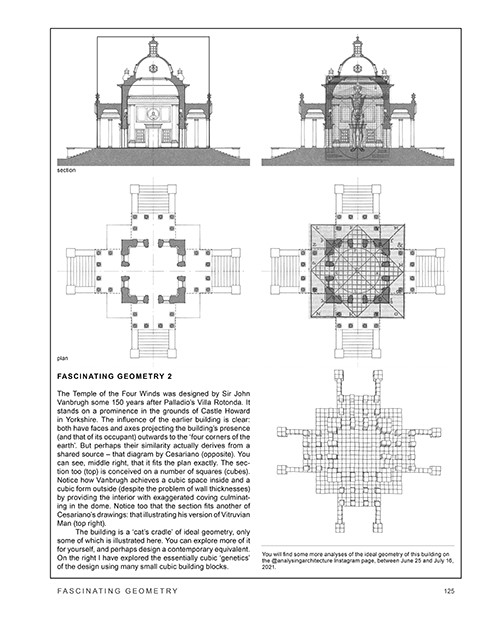
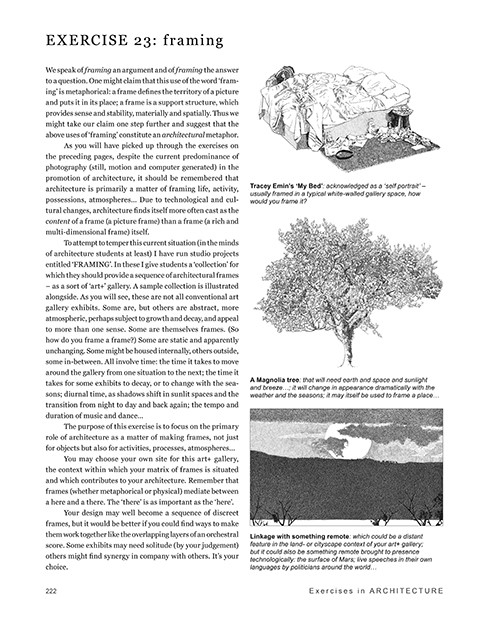
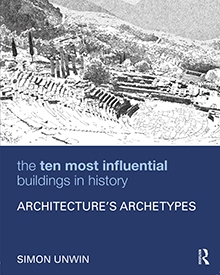
The Ten Most Influential Buildings in History: Architecture's Archetypes
Even the most inventive and revolutionary architects of today owe debts to the past, often to the distant past when architecture really was being invented for the first time. Architects depend on their own imaginations for personal insights and originality but their ideas may be stimulated (consciously or subliminally) by particularly powerful buildings from history. The Ten Most Influential Buildings in History: Architecture’s Archetypes identifies ten architectural archetypes that have been sources of inspiration for architects through the centuries. Each archetype is analysed through distinctive examples, following the methodology established by the author in his previous books. The variety of ‘lines of enquiry’ each archetype has provoked in latter-day architects is then explored by analysing their work to reveal ideas inspired by those earlier buildings. Archetypes have a timeless relevance. In adopting this approach, The Ten Most Influential Buildings in History is as pertinent to contemporary practice as it is to understanding buildings from antiquity, and offers insights into the bridges of influence that can operate between the two.
Sample pages
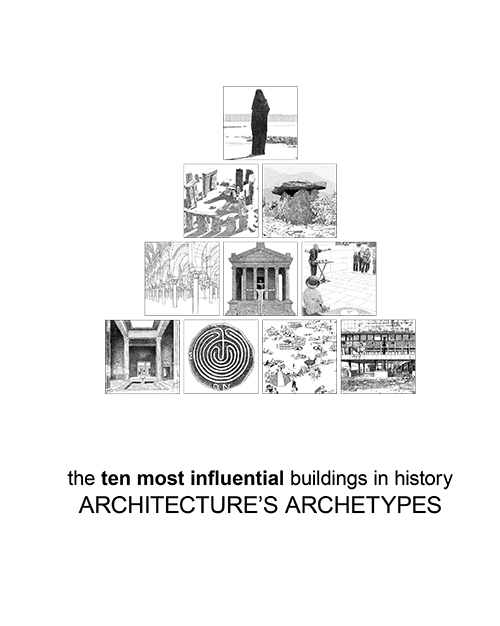

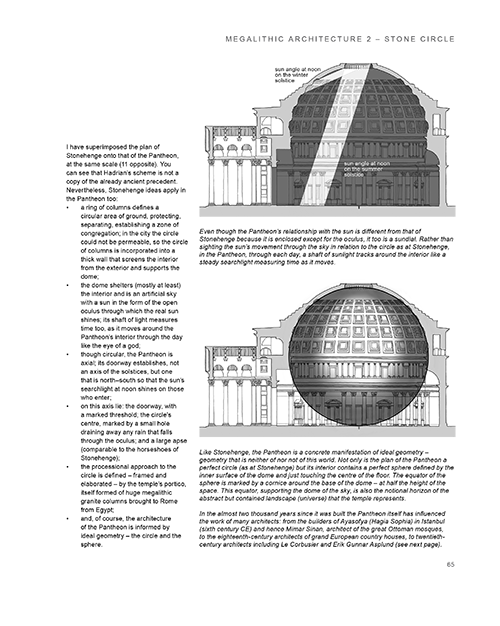
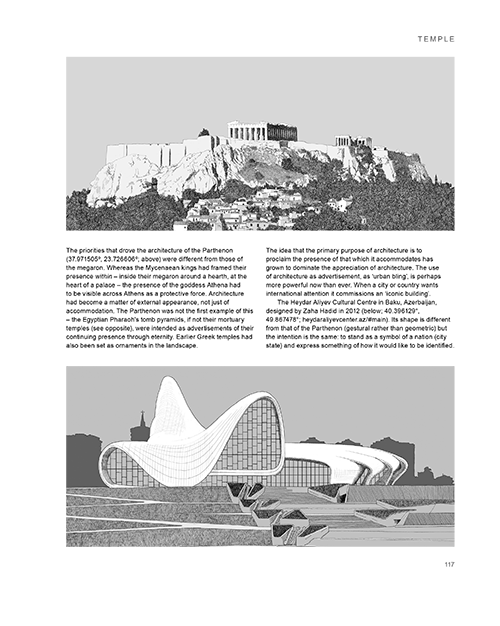
The 'Person' Notebook
I began this notebook in 2004 alongside some of the other notebooks in this series. I had the idea that I could devote separate notebooks to specific themes, and for a while carried around five or six notebooks. Needless to say this discipline eventually failed. The present notebook began as a record of investigations of the relationships between architecture and the person. This theme, because it is so general, does prevail throughout the notebook, but its pages also contain material prepared for the book Doorway (Routledge, 2007), and drawings related to various trips abroad.
The 'Time' Notebook
This notebook started as exploration of the theme 'time in architecture' but gradually other themes pushed their way in. Like the other notebooks in this series it has not been edited. This iBookstore edition contains a brief Introduction but otherwise is a facsimile of the original notebook.
The 'Entrance' Notebook
This notebook contains some of the research for the book Doorway. It was not compiled with publication in mind and has not been edited.
You may also download this notebook for your iPad from the iBookstore. The iPad edition has:
- an Introduction explaining the context of the Notebook
- easier navigation through a scrollable bar
- a detailed and fully hyperlinked Index
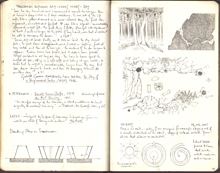
The 'Place' Notebook
This notebook started with a focus on the issue of 'place' but this gradually widened. It too was not compiled with publication in mind and has not been edited.
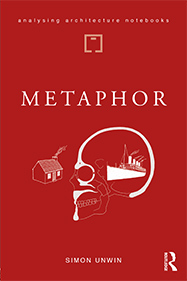
Metaphor
Metaphor is the most powerful component of the poetry of architecture. It has been a significant factor in architecture since the earliest periods of human history, when people were finding ways to give order and meaning to the world in which we live. It is arguable that architecture began with the realisation of metaphor in physical form, and that subsequent movements – from Greek to Gothic, Renaissance to Modern, Victorian to Vernacular… – have all been driven by the emergence or rediscovery of different metaphors by which architecture might be generated.
Sample pages
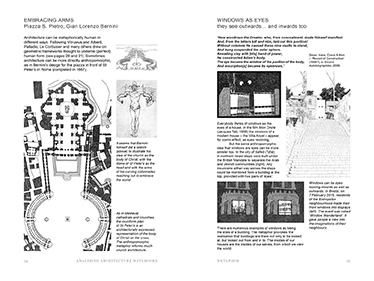
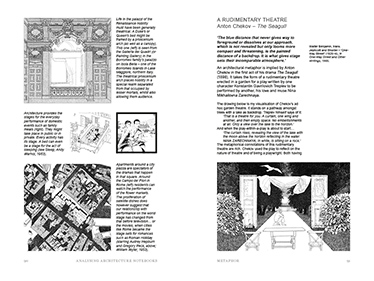

Curve
Curve is a divisive issue in architecture. Some see curves as expensive and decadent; others as an expression of transcendence – a way that the human mind can express its freedom from quotidian constraints. Yet others use curves to emulate some of the most beautiful forms in nature. This Notebook considers the various authorities to which architects look for the generation of their curves. It also considers the aspirations curves manifest in architectural form.
Sample pages
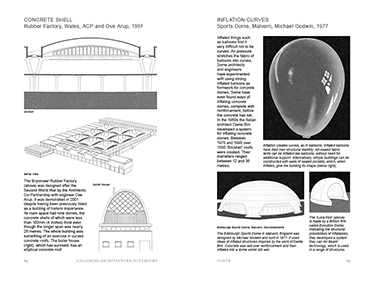
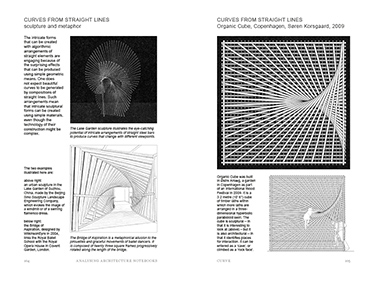
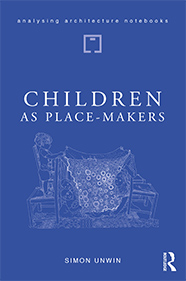
Children as Place-Makers
As children we make places spontaneously: on the beach, in woodland, around our homes… Those places are evidence of a natural language of architecture we all share. Beginning with the child as seed and agent of the places it makes, initial sections of Children as Place-makers illustrate the key ‘verbs’ that drive that natural language of architecture. Later sections look at the core importance of the circle of place, how as children we are drawn to inhabit boxes, and the narrative possibilities that arise when place is linked with imagination. The principal messages of this Notebook are that it is by place-making we make sense of the space of the world in which we live, and that the first step in becoming a professional architect is to re-awaken the innate architect inside each of us.
Sample pages
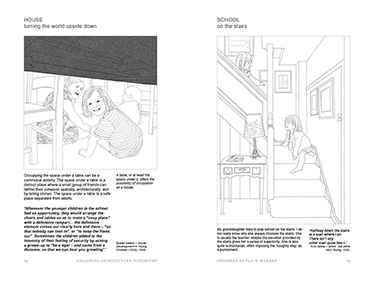
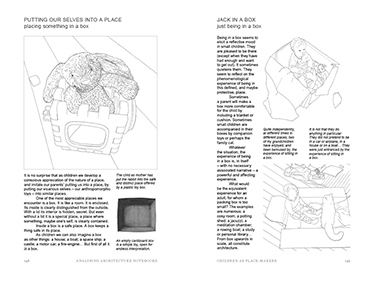
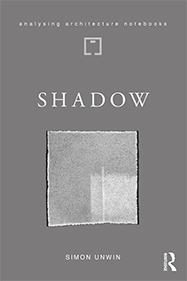
Shadow
Shadows may be insubstantial but they are, nevertheless, an important element in architecture. In prehistoric times we sought shade as a refuge from the hot sun and chilling rain. Through history architects have used shadows to draw, to mould form, to paint pictures, to orchestrate atmosphere, to indicate the passing of time… as well as to identify place. Sometimes shadow can be the substance of architecture.
Sample pages
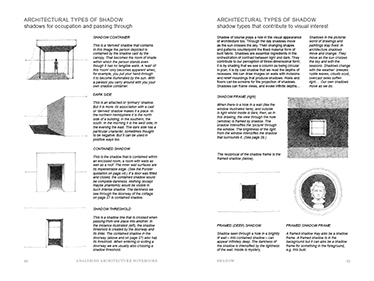
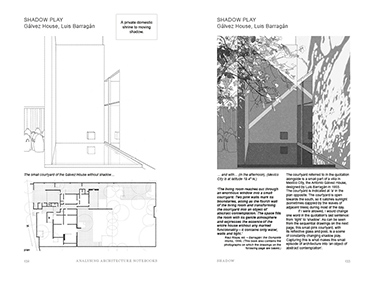
Publications by Simon Unwin
Books
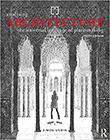
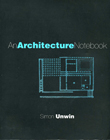
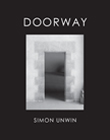
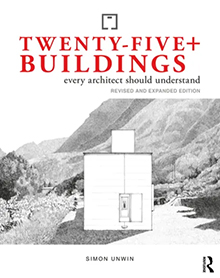
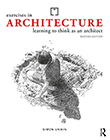
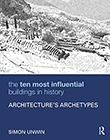
Simon Unwin's six textbooks are aimed at those who wish to understand the workings of architecture. They are available from Amazon and other online booksellers.
Analysing Architecture Notebooks
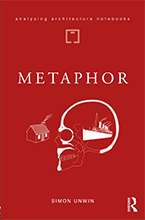
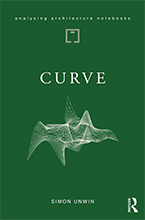
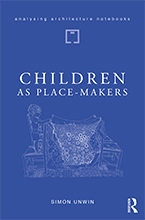
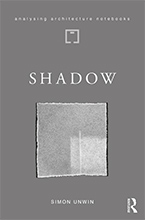
These Analysing Architecture Notebooks are the new chapters I would have added to Analysing Architecture had not excessive size become a concern. The series format also allows me to explore topics at greater length than if I were confined to just a few extra pages in the original book. Nevertheless the shared aim remains the same: to explore and expose the workings of architecture in ways that might help those who face the challenges of doing it.
Notebooks
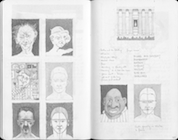
Some of Simon Unwin's personal notebooks are available for download here.
SeCRETS of ARCHITECTURE eBook Series
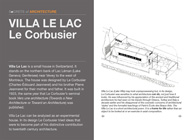
SeCRETS of ARCHITECTURE offers a series of eBooks (available for iPad through iBooks), each of which analyses a significant building or other work of architecture. Follow @simonunwin999 on twitter for news of new titles in the series.

 Analysing Architecture YouTube Channel
Analysing Architecture YouTube Channel Analysing Architecture on Instagram
Analysing Architecture on Instagram


